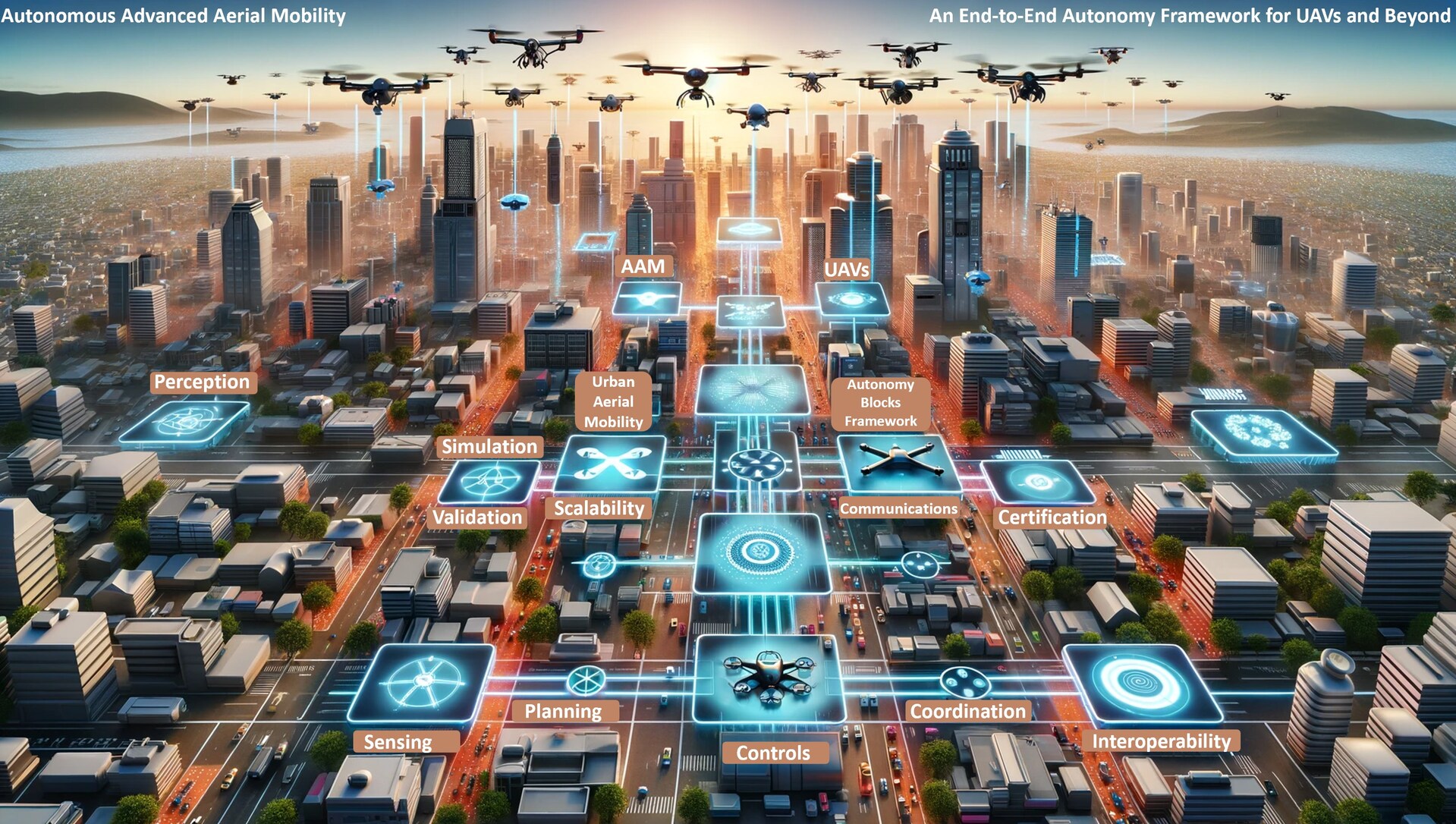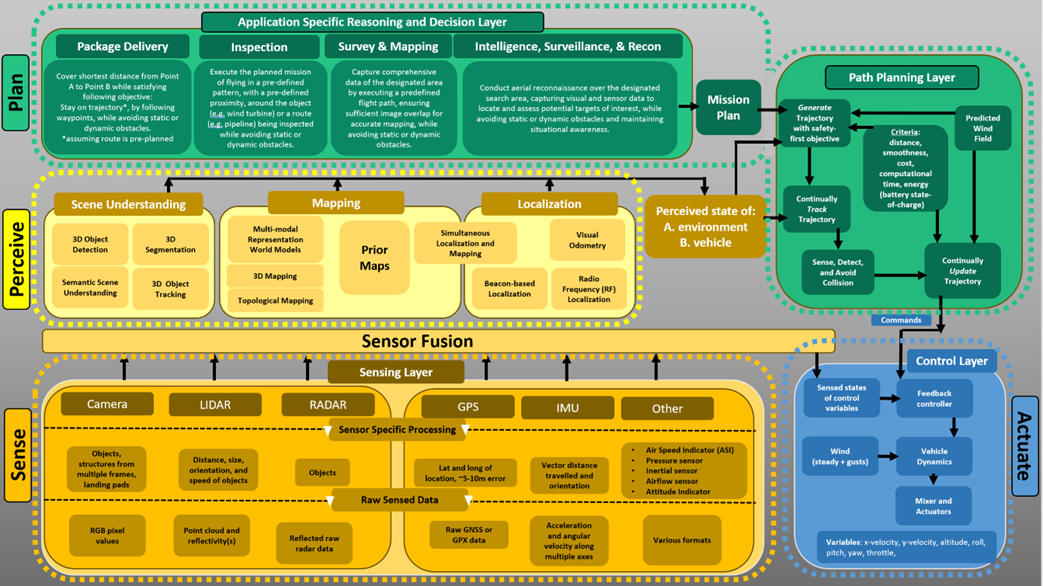

Imagine a future where hopping on a flying taxi to soar above the traffic-clogged streets of your city is an everyday reality. This isn’t a far-fetched dream but a tangible future brought closer by the advent of urban aerial mobility (UAM), fueled by the innovation of electric vertical take-off and landing (eVTOL) vehicles. Our recent publication in IEEE Access, “Autonomous Advanced Aerial Mobility — An End-to-End Autonomy Framework for UAVs and Beyond”, explores this transformative concept in depth, presenting a practical and holistic approach to reimagining our city skies.

Note: This article has also been published as a Medium post.
The vision of unmanned aerial vehicles (UAVs) and eVTOL aircraft swiftly navigating our skies, carrying goods, and potentially passengers, may sound like a chapter from a sci-fi novel. However, with the “Autonomy Blocks Framework for Advanced Aerial Mobility,” this vision is edging closer to reality. This comprehensive approach aims to make the skies accessible and safe for autonomous flight, promising a new age of transportation.
Envision a world where air taxis are as ubiquitous as cars, drones deliver packages right to your doorstep, and aerial surveillance is conducted with precision and ease. This is the world AAM aims to create. Yet, actualizing this future involves overcoming significant challenges, including the intricate design and operation of various aerial vehicles autonomously sharing airspace, not to mention the need for stringent safety certifications and multi-agent fleet operations.
At the heart of this transformative framework are “Autonomy Blocks,” modular units designed for the operation and management of UAM systems. These blocks, embodying capabilities such as sensing, communication, navigation, control, coordination, and decision-making, are ingeniously modular. They can be combined in various ways to achieve different autonomy levels, ranging from fully human-operated to completely autonomous systems.
The Autonomy Blocks Framework isn’t just theoretical; it’s a scalable and adaptable model designed for various form-factors and applications. This innovative blueprint isn’t solely about the technology; it also emphasizes the importance of simulation and validation to ensure these systems can operate safely and efficiently in complex, real-world environments.
The framework comprises four main blocks:

Moreover, UAM systems are tasked with overcoming challenges like ensuring safety, enhancing efficiency, achieving scalability, fostering interoperability, and gaining public acceptance. The autonomy blocks are central in addressing these challenges, empowering eVTOL vehicles to communicate and coordinate, optimize flight paths, and adapt to changing urban landscapes, all while integrating with existing transportation systems.
The heart of this framework beats with the rhythm of artificial intelligence (AI). From deep learning to reinforcement learning, AI forms the core of autonomous systems, enabling them to “see,” “understand,” “decide,” and “move.” But before these systems take to the skies, they need rigorous testing and validation. This is where simulation and synthetic data play a crucial role. By creating realistic virtual scenarios, engineers can test and refine the systems, ensuring they’re ready for real-world deployment.
In conclusion, this journey isn’t solely about the technological advancements; it’s about redefining the future of transportation to be safer, more efficient, and more accessible. The “Autonomy Blocks Framework for Advanced Aerial Mobility” is paving the way for a future where flying taxis are part of our everyday lives. The skies might not be buzzing with drones and air taxis yet, but the path is being charted, and it’s only a matter of time before we witness the future of flight.
For those intrigued by the prospects of urban aerial mobility and the concept of autonomy blocks, we invite you to explore our full paper and join the conversation shaping the future of urban skies: Autonomous Advanced Aerial Mobility — An End-to-End Autonomy Framework for UAVs and Beyond.